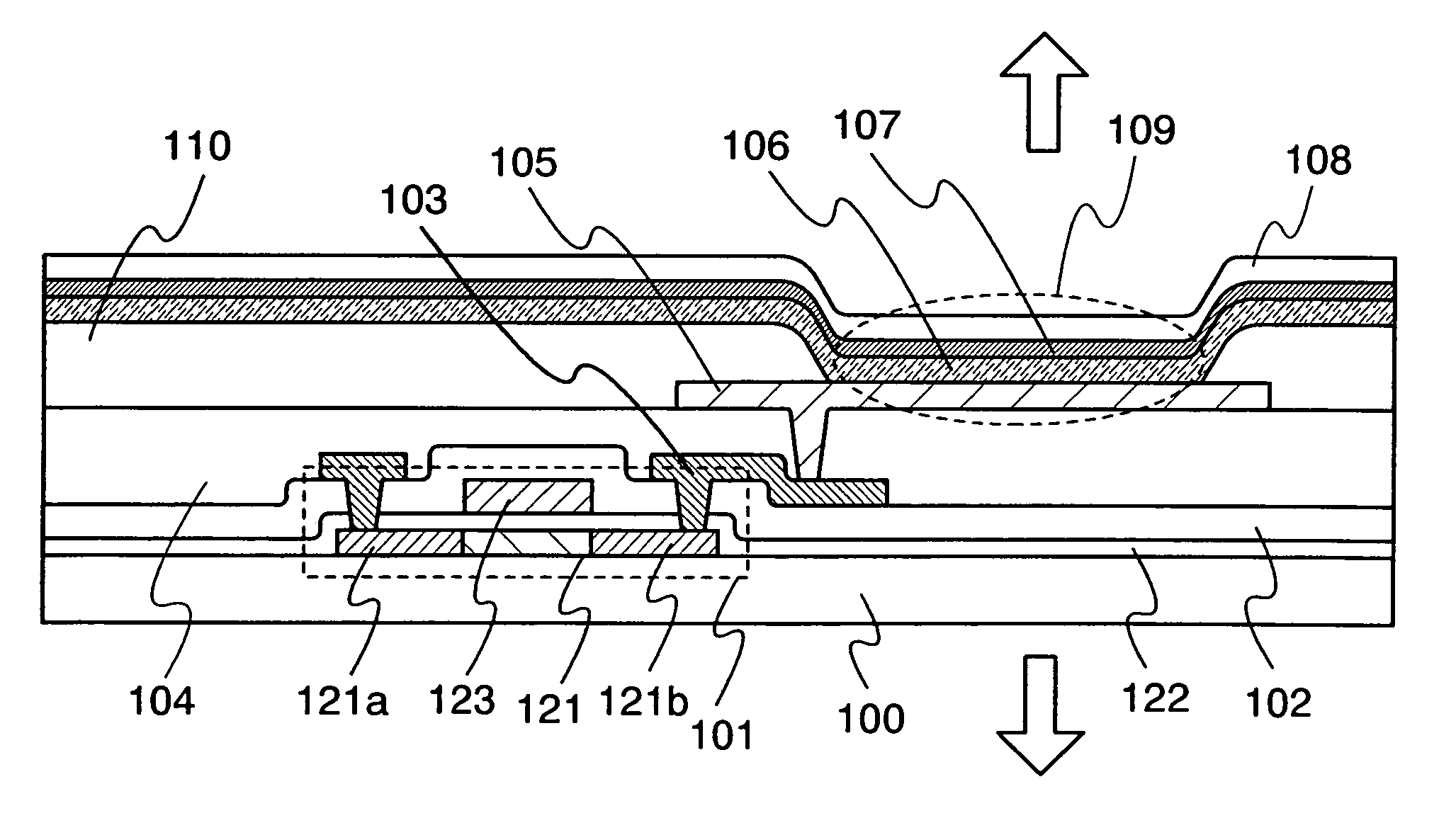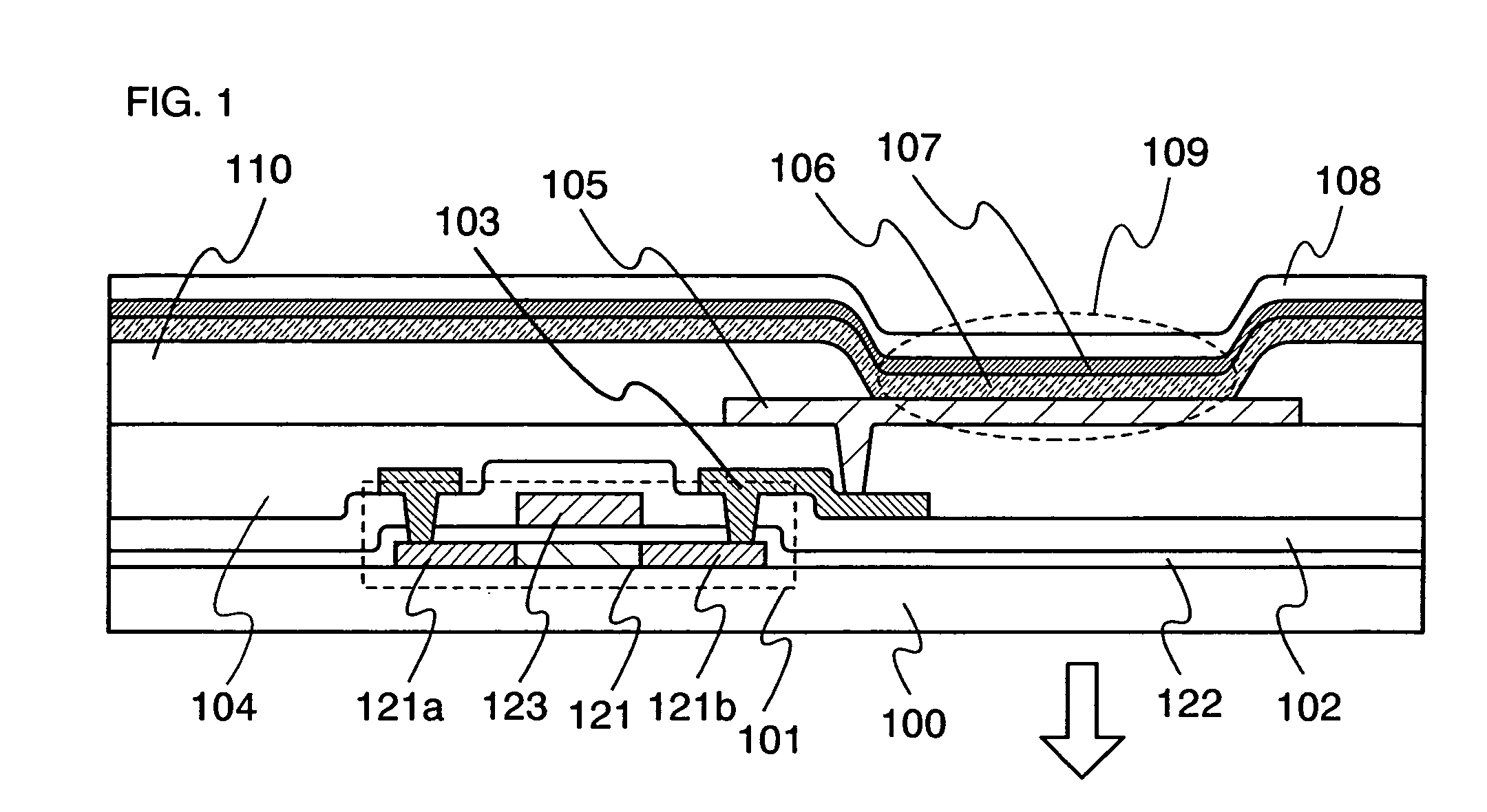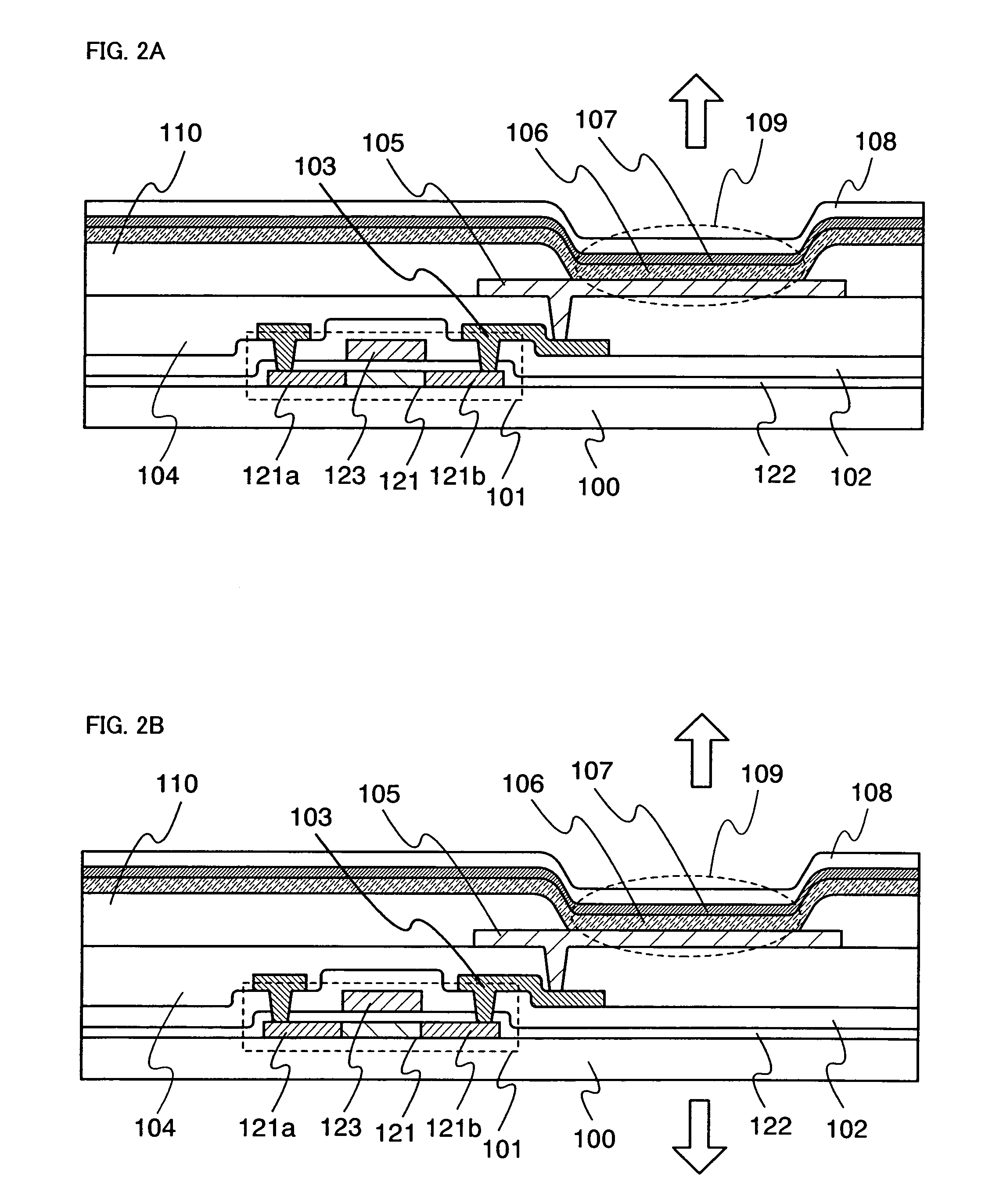Light emitting element, light emitting device and semiconductor device
a technology of light emitting devices and light emitting elements, which is applied in the direction of solid-state devices, electric lighting sources, electric light sources, etc., can solve the problems of poor element quality, troublesome adjustment or the like of a material, and unsuitable coating performance, and achieve the effect of convenient manufacturing
- Summary
- Abstract
- Description
- Claims
- Application Information
AI Technical Summary
Benefits of technology
Problems solved by technology
Method used
Image
Examples
embodiment mode 1
[0024]One mode of a light emitting device according to the invention is described with reference to FIG. 1.
[0025]A transistor 101 and the like are manufactured over a substrate 100. Here, the substrate 100 is not limited in particular, and a substrate having flexibility such as a plastic substrate as well as a glass substrate, a quartz substrate, or the like can be used. Further, the transistor 101 shown in FIG. 1 is a top-gate transistor in which a gate insulating layer 122 and a gate electrode 123 are sequentially formed over a semiconductor layer 121; however, the structure of a transistor is not limited in particular, and a bottom-gate transistor may be used as well as the top-gate transistor. Further, an element such as a capacitor element may be manufactured as well as a transistor. The semiconductor layer which is included in the transistor 101 may be a semi-amorphous layer or the like as well as a layer containing a crystalline component or a layer containing a non-crystalli...
embodiment mode 2
[0038]In this embodiment mode, a light emitting device according to the present invention including a bottom-gate transistor 201 is described with reference to FIGS. 3A and 3B.
[0039]In FIG. 3A, a gate electrode 221 is formed over a substrate 200, and a gate insulating layer 222 which covers the gate electrode 221 is further formed. A semiconductor layer 223 is further formed over a portion in which the gate insulating layer 222 overlaps the gate electrode 221. An N-type semiconductor layer 224 is formed over a region except a channel formation region in the semiconductor layer 223.
[0040]Thus, the bottom-gate transistor 201 including the gate electrode 221, the gate insulating layer 222, the semiconductor layer 223, and the N-type semiconductor layer 224 is electrically connected to a wiring 202 since the N-type semiconductor layer 224 is in contact with the wiring 202.
[0041]Further, similarly to the semiconductor layer 121 mentioned in Embodiment Mode 1, the semiconductor layer 224 ...
embodiment mode 3
[0052]In this embodiment mode, a circuit configuration and a driving method of a light emitting device having a display function, which is a light emitting device as described in Embodiment Mode 1, are described with reference to FIGS. 3A to 6.
[0053]FIG. 4 is a schematic top view of a light emitting device to which the present invention is applied. In FIG. 4, a pixel portion 6511, a source signal line driver circuit 6512, a writing gate signal line driver circuit 6513, and an erasing gate signal line driver circuit 6514 are provided over a substrate 6500. The source signal line driver circuit 6512, the writing gate signal line driver circuit 6513, and the erasing gate signal line driver circuit 6514 each are connected to an FPC (Flexible Printed Circuit) 6503 which is an external input terminal through a group of wirings. The source signal line driver circuit 6512, the writing gate signal line driver circuit 6513, and the erasing gate signal line driver circuit 6514 each receives a ...
PUM
| Property | Measurement | Unit |
|---|---|---|
| grain diameter | aaaaa | aaaaa |
| wavenumber | aaaaa | aaaaa |
| temperature | aaaaa | aaaaa |
Abstract
Description
Claims
Application Information
 Login to View More
Login to View More - R&D
- Intellectual Property
- Life Sciences
- Materials
- Tech Scout
- Unparalleled Data Quality
- Higher Quality Content
- 60% Fewer Hallucinations
Browse by: Latest US Patents, China's latest patents, Technical Efficacy Thesaurus, Application Domain, Technology Topic, Popular Technical Reports.
© 2025 PatSnap. All rights reserved.Legal|Privacy policy|Modern Slavery Act Transparency Statement|Sitemap|About US| Contact US: help@patsnap.com



